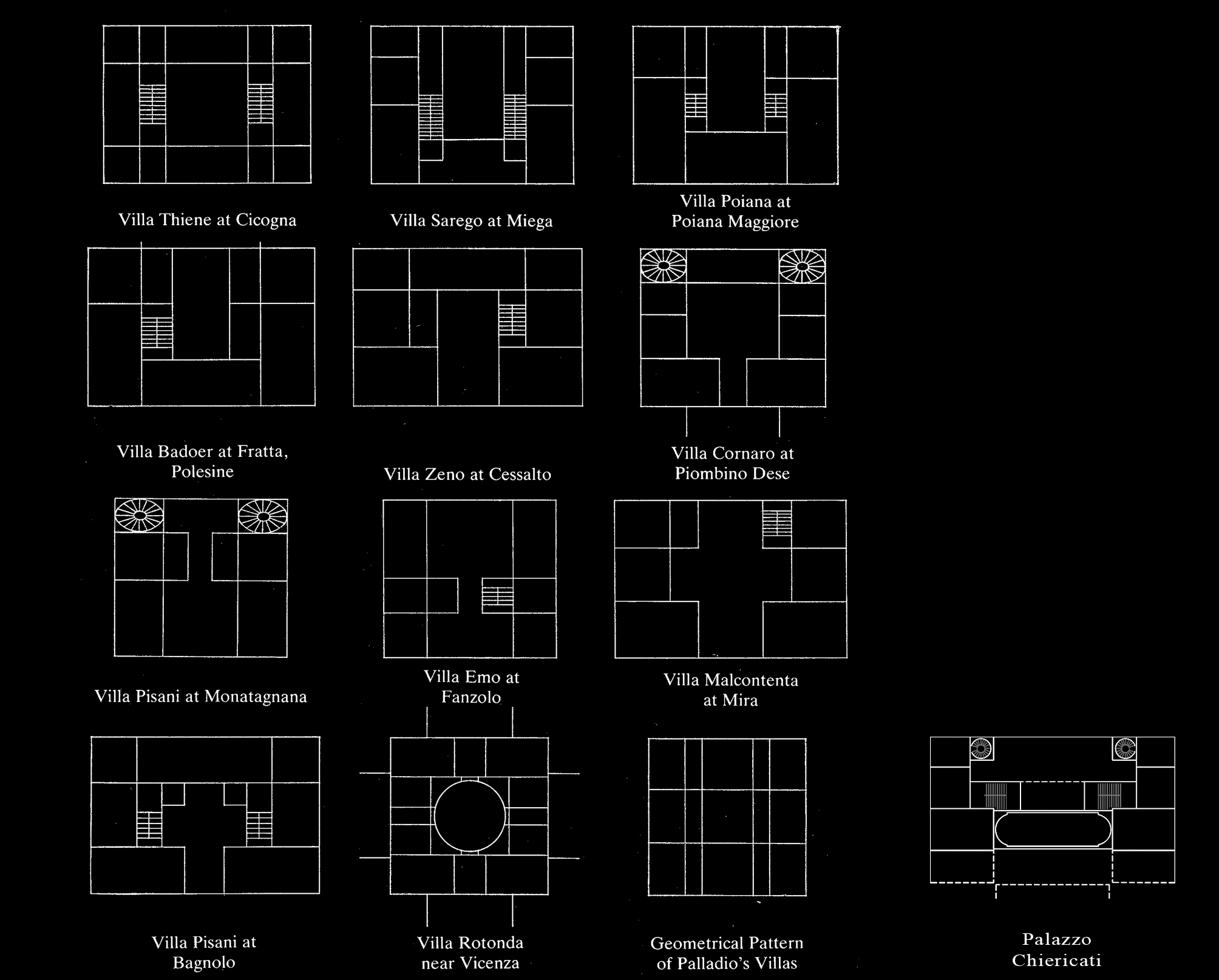TOPOLOGY AS
RELATIVE DISPLACEMENT
Pablo Lorenzo-Eiroa
Andrea
Palladio has been identified as a mannerist, since his work
resisted previous canons and the architecture of the
renaissance that was obsessed with linear order. This
resistance included the displacement of order in plan and,
later discussed, the interruption of perspective in
elevation. This resistance is interpreted from a reading of
his architecture, based on the establishment of an order but
also its critique. Palladio incorporates an a posteriori
displacement, a variation that would critique the initial
predetermination of the order he establishes. With this
critique, Palladio anticipated the work of Borromini and
many posterior architects, since even if his project seems
not to suspend the pendulum between the past renaissance and
the baroque to come, by critiquing the predetermination of
order, he anticipates a conflict between predetermination
and post-determination building a continuity between the
two. What is interesting in regards to a post-historical
manifesto, is that his project was arguably one of the first
to both define and also critique a continual cultural
problem in humanism.
Palladio
defined a modern project based on structure, that is based
on the recognition of absolute idea order, identified by the
humanists of the time. This modernism was based on an
advancement from Leon Battista Alberti system of
measurements, which Palladio used to establish a system of
relationships between spaces, assigning continuity across
the composition through alternating rhythmic mathematical
ratios. He reinforced a general logic, not only relating
part to whole, but creating a responsive structural system
that can be both referenced and altered, subsequently giving
an underlying sense of control to the organization. While a
normal proportion is kept constant, the other varies by
inducing displacements to this initial reference, projecting
a relationship that is both kept, accumulated but also
displaced. This system of relationships systematically
controls decisions based on proportions parameterized by
mathematical progression, but particularly developing a self
referential modern consciousness. This mental consciousness
critiques the ideal, generic, typological set of
pre-established relationships incorporating variations to
the composition with singular displacements that activate
specific architecture problems that respond to the logic of
the particular. This systematic work across Palladio's
villas is demonstrated by Rudolph Wittkower's common nine
square grid composition.
An
alternative projective topological exercise on Palladio’s
Palazzo Chiericati may offer a parallel argument to Peter
Eisenman’s diagrams. The first characteristic of this
building, according to James Ackerman, is its disproportion.
Spaces are longitudinal and narrow due to the compression of
sequential spatial layers perpendicular to the main axis,
which are organized in a distorted nine square grid figure.
This disproportion forced by the constraint of the site, but
independently from indexing this circumstance, it activates
a more relevant organizational problem. The building is
sited on what was the edge of Vicenza. The placement is
quite particular, as a concession by the commune, arguing a
benefit with the public loggia, allowed Palladio to build
beyond the site, placing this particularly designed loggia
in public grounds.

These
series of displacements that relate horizontal to vertical
in the floor plan develop an alternative idea of
architecture topology, since one may reconstruct the
relationship between the original type and the final design
in a continuous elastic diagram, a genealogy of dynamic
forces that accumulates traces. Furthermore, this
topological transformation enables such displacement that
critiques the initial ideal nine square grid organization
proposing a distinct typological change, displacing the
organization from a centralized singular organization to a
field of layered spaces with no hierarchy. This critiquing
of the initial scheme is developed in an intrinsic to
architecture operation. In addition, the design
ultimately seems to tension spaces apart from the elastic
generic organization. The design of the spaces acquire
certain autonomy from the generic relational logic, and even
if one may trace this formal genealogy, the composition is
not reversible, adding tension to the organization.

It is
interesting to question why Wittkower, did not include such
an extreme variation in his eleven paradigmatic diagrams.
Independently from excluding categories (palazzo-villa) his
reductive method forced him to include only variations with
a differential change of degree and not such radical
and conceptual typological change, which establishes in the
series a specific to architecture differentiation.
There are some clues that can give certain argumentation to
this idea crossing categories between villas and palazzos.
One is the location at the outskirt of the town looking at
the landscape, as the openness of the facade makes this
Pallazzo relate to the porticos of the villas. But a more
relevant curiosity may be that in
Quattro Libri he
placed Villa
Rotonda in
the section on palaces rather than the one on villas.
[...] Partially published in Instalaciones: Sobre el
Trabajo de Peter Eisenman and some of the conclusions of
this analysis provided the ground for the Yale Constructs
Spring 2013 article on Eisenman's Palladio Virtuel.